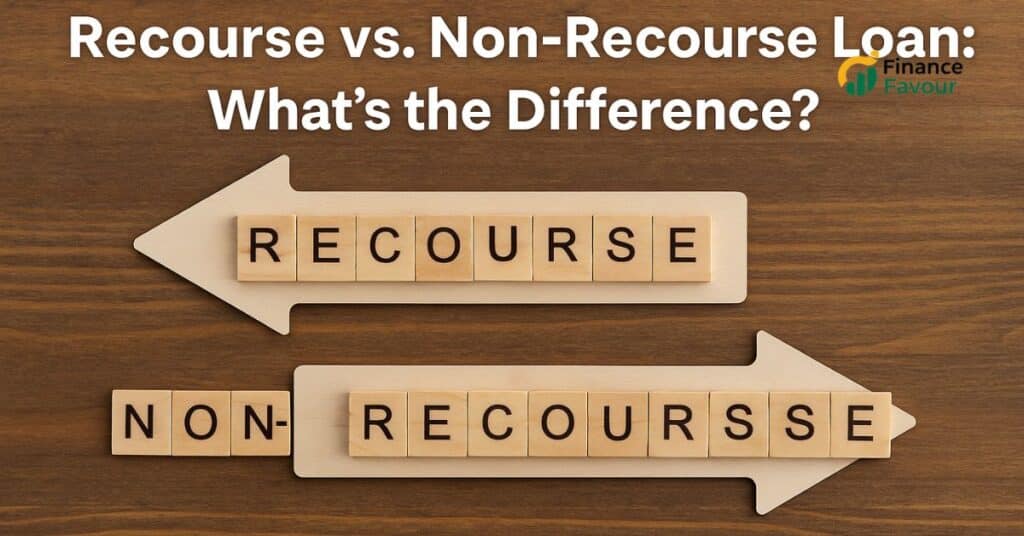Navigating the world of financing options can be overwhelming, especially when faced with the choice between recourse and non-recourse loans. For financial professionals, borrowers, and investors, understanding the nuances of these loan types is crucial in making informed decisions that align with their financial goals and risk tolerance. A recourse loan provides lenders with the ability to pursue the borrower’s other assets in case of default, offering a layer of security for the lender but potentially increasing debt liability for the borrower. In contrast, a non-recourse loan limits the lender’s claim solely to the collateral, offering borrowers protection but often requiring more stringent qualifying criteria. In this post, we aim to equip you with the knowledge to confidently compare these loan options, helping you make the best choice for your investment strategy.
Understanding Loan Basics
Before diving into the specifics of recourse and non-recourse loans, it’s essential to grasp the fundamental concepts that underpin these financing options. This section will break down the key elements of each loan type and highlight their main differences.
Recourse Loan Fundamentals
Recourse loans are a common financing option that provides lenders with additional security. In these agreements, borrowers are personally liable for the full amount of the loan.
If a borrower defaults and the collateral’s value doesn’t cover the outstanding debt, the lender can pursue the borrower’s other assets. This might include savings accounts, investments, or even future earnings.
Recourse loans often come with more favorable terms due to the reduced risk for lenders. However, they also carry a higher level of risk for borrowers, as their personal assets are on the line.
Non-Recourse Loan Essentials
Non-recourse loans offer a different approach to financing, limiting the lender’s claim to the collateral securing the loan. This structure provides borrowers with a layer of protection for their personal assets.
In the event of default, the lender can only seize the collateral specified in the loan agreement. They cannot pursue the borrower’s other assets to recover any remaining balance.
Due to the increased risk for lenders, non-recourse loans often come with stricter qualifying criteria and may have higher interest rates or fees compared to recourse loans.
Key Differences Explained
The primary distinction between recourse and non-recourse loans lies in the lender’s ability to recover losses in case of default. Here’s a quick comparison:
| Aspect | Recourse Loan | Non-Recourse Loan |
| Lender’s Claim | Collateral + Other Assets | Collateral Only |
| Borrower’s Risk | Higher | Lower |
| Interest Rates | Generally Lower | Often Higher |
| Qualifying Criteria | Less Strict | More Stringent |
Understanding these differences is crucial for making informed decisions about which loan type best suits your financial situation and investment goals.
Debt Liability and Risks
When considering financing options, it’s crucial to understand the potential risks and liabilities associated with different loan types. This section will delve into the specific risks of both recourse and non-recourse loans, helping you make an informed decision.
Assessing Recourse Loan Risks
Recourse loans carry significant risks for borrowers due to the extended liability beyond the collateral. It’s essential to carefully evaluate your financial situation before committing to this type of loan.
The primary risk is the potential loss of personal assets if you default on the loan. Lenders can pursue your savings, investments, and even future earnings to recover their losses.
However, recourse loans often come with lower interest rates and more flexible terms, which can be advantageous for borrowers with a stable financial situation.
Analyzing Non-Recourse Loan Risks
Non-recourse loans offer borrowers protection against personal asset seizure, but they come with their own set of risks. Understanding these risks is crucial for making an informed decision.
The main risk for borrowers is the potential loss of the collateral in case of default. While personal assets are protected, the loss of the financed property can still have significant financial implications.
Lenders often compensate for the increased risk by charging higher interest rates or requiring larger down payments. This can make non-recourse loans more expensive in the long run, despite the added protection.
Financing Options for Investors
For investors, particularly those in real estate, choosing the right financing option is crucial for maximizing returns and managing risk. This section explores how to select the most suitable loan type and compares loan options specifically for real estate investments.
Choosing the Right Loan Type
Selecting between recourse and non-recourse loans depends onyour investment strategy, risk tolerance, and financial situation. It’s essential to consider not only the terms and rates but also the potential impact on your personal assets and financial stability.
Evaluating Recourse Loans for Investment Purposes With recourse loans, investors can potentially secure more flexible terms and lower interest rates. This makes them an attractive option for investors with a strong financial standing and a high risk tolerance. However, one should carefully consider the risk of personal asset loss before opting for a recourse loan. The potential for more favorable terms should be weighed against the increased risk.
Pros and Cons
Each loan type has its own set of advantages and disadvantages. Understanding these can help you make an informed decision that aligns with your financial goals and risk tolerance. Here, we elaborate on some of the key pros and cons associated with recourse and non-recourse loans.
Recourse Loan Pros and Cons
Advantages:
– Lower Interest Rates: Due to the increased security for lenders, recourse loans generally offer lower interest rates and fees than non-recourse loans.
– More Flexible Terms: Lenders may provide more lenient loan terms and qualification requirements given the extra layer of protection provided by the borrower’s personal assets.
Disadvantages:
– Extended Borrower Liability: The borrower is at risk of losing personal assets beyond the collateral due to the lender’s right to collect outstanding debt.
– High Risk in Unstable Financial Situations: Fluctuations in income or unforeseen expenses can make repayment more challenging, increasing the risk of default and personal asset loss. This risk is particularly significant in volatile economic or industry conditions.
Non-Recourse Loan Pros and Cons
Advantages:
– Limited Borrower Liability: In case of default, the lender can only go after the collateral, protecting the borrower’s personal assets.
– Protection in Volatile Economic Situations: Even if the loan falls into default, borrowers will not lose their personal assets.
Disadvantages:
– Higher Interest Rates: Non-recourse loans typically come with higher interest rates due to the increased risk for the lender.
– Larger Down Payments: Lenders may require larger down payments to offset the higher risk of non-recourse loans.
– Stricter Qualification Requirements: Due to their risk structure, lenders often have more stringent qualifications for non-recourse loans. Applicants typically need a stronger credit history and more substantial assets.
Conclusion
When seeking financing for an investment, the choice between recourse and non-recourse loans should be carefully considered. Both have their own set of advantages and disadvantages, and what may seem like a marginal difference in interest rates, terms or down payment requirements can have a significant impact over the lifespan of the loan. To make the best decision, thoroughly analyze your financial situation, consider the degree of risk tolerance, and understand the implications of the loan type on your future finances. Consulting with a financial advisor or attorney experienced in investment loans can also be beneficial in navigating these options.
Also read The Escrow Process and Requirements in Mortgages Finance
FAQ
Yes, banks do offer non-recourse loans. However, due to the higher risk involved, they are less commonly offered than recourse loans and usually have stringent qualification requirements. It’s important for potential borrowers to speak directly with their prospective lenders about the availability and specific terms of non-recourse loans?
A non-recourse loan is a loan where the borrower’s liability is limited to the collateral securing the loan. If the borrower defaults, the lender can seize the collateral, but cannot seek out the borrower’s personal assets beyond that. This type of loan is beneficial to borrowers who are seeking to limit their personal financial risk.
One example of a non-recourse loan is a mortgage loan. In a non-recourse mortgage, if the borrower defaults, the lender can only recover the collateral property. Even if the outstanding loan balance exceeds the property value, the lender cannot pursue the borrower’s other assets. However, laws pertaining to non-recourse mortgages vary significantly by state, so potential borrowers should seek legal advice to fully understand their personal liability in the event of a default.
Yes, a recourse loan must be paid back. If a borrower defaults on a recourse loan, the lender can pursue the borrower’s personal assets beyond the collateral to recover the outstanding debt. These loans can represent a higher risk to borrowers, particularly in unstable financial conditions. However, they often come with lower interest rates and more flexible terms due to the added security they provide to lenders. Nonetheless, borrowers must be aware of the potentially higher risk involved.




